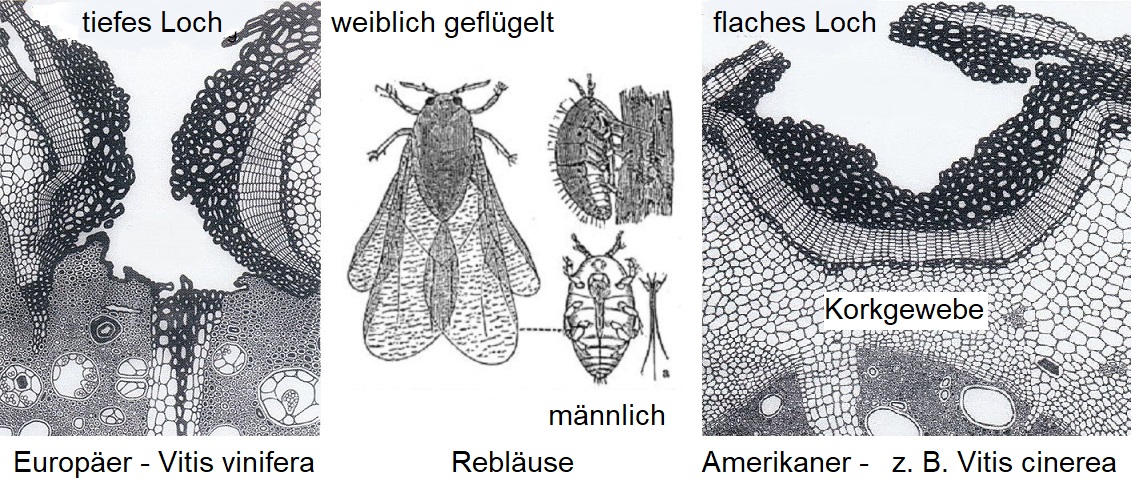Pathological growths and swellings on leaves, buds, stems, flowers, roots and also fruits of a host plant caused by bacteria, fungi or animal pests. On the vine, they can be caused by aphids, gall midges, gall wasps, gall mites and grape aphids (see in the picture). The insects and/or also the laid eggs or the hatched larvae release substances with a high content of gallotannin (gall tannic acid) to the infested plant site, which characteristically change the surrounding plant tissue. Galls come in a wide variety of forms; each pest causes a characteristic gall form that makes identification possible. Depending on the pest causing the galls, the damage is manifested by pockmarked elevations on the upper side of the leaf in green, reddish, brown or sulphur yellow (in the case of the gall mite), by lentil-like galls (in the case of the gall midge) as well as by beuteal-like galls (in the case of the grape phylloxera). In the case of the phylloxera, the gall body is on the underside of the leaf and the opening is on the upper side of the leaf.

The galls consist of several layers of small, thin-walled cells that are rich in proteins, starch and oil and serve as nutrition. Larger, thick-walled cells that tend to lignify give the galls their strength. The growth of bile is due either to the enormous swelling of individual cells or to accelerated cell divisions near the site of attack. The gall also provides a protective covering for the pest while it feeds on the plant. The most conspicuous galls are caused by insects that invade the plant tissue when they lay their eggs. The enlargement of the surrounding tissue is then caused by secretions from the eggs or from the hatched larva. Aphids appearing on the roots also cause reactions of the vine in the form of growths called nodosities (on young roots) and tuberosities (on older roots) by their bite.

Leaf galls: LWG Bavaria
European and American grapevine: J. Schmid, F. Manty, B. Lindner,
ISBN 978-3-934742-56-7, GFDL 1.2, Link 1 / Link 2
Grapevine aphids: From unknown - Meyers, Public domain, Link
Voices of our members

For my many years of work as an editor with a wine and culinary focus, I always like to inform myself about special questions at Wine lexicon. Spontaneous reading and following links often leads to exciting discoveries in the wide world of wine.
Dr. Christa Hanten
Fachjournalistin, Lektorin und Verkosterin, Wien